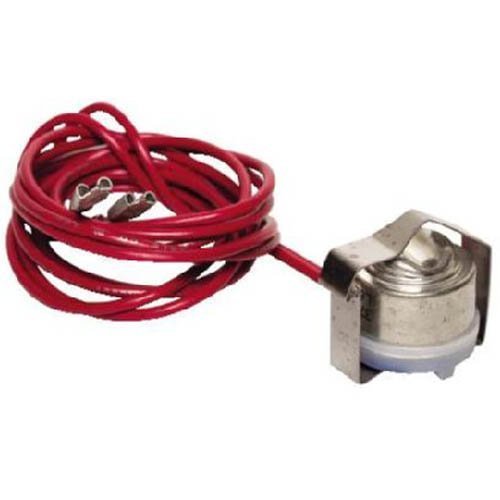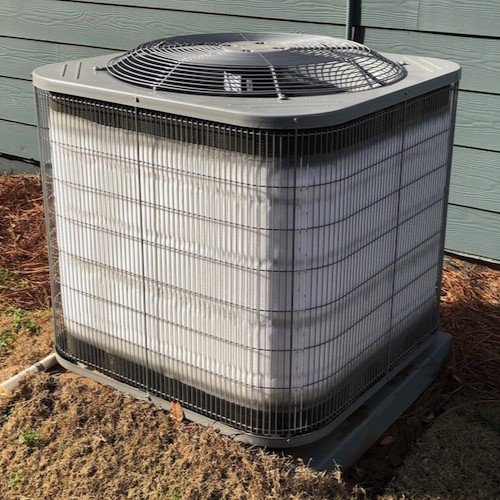How Much Does it Cost to Replace a Defrost Sensor on a Heat Pump
How much to replace the frost sensor on a heat pump?
It will cost about $200.
The repair itself is somewhat simple. Access issues or emergency charges could potentially cause the price to be higher. You should be expecting to pay at least $200 every time you have any kind of heating and air repair.
Quick Links:
Introduction
When it comes to maintaining the comfortable temperature of your home, understanding the intricacies of your heat pump, such as the role of a defrost sensor, is essential. But what happens when this vital component needs replacement? In this informative journey, we will guide you through “How much does it cost to replace a defrost sensor on a heat pump”, and the costs, factors, and signs associated with replacing a defrost sensor on a heat pump. So, shall we delve into heat pumps and their defrost sensors?
Key Takeaways
The cost to replace a defrost sensor on a heat pump varies greatly, with an average range of $90 to $650, influenced by multiple factors like heat pump type, age, model, sensor brand, and technician’s labor charges.
Signs of a failing defrost sensor include an inefficient defrost cycle, excessive ice buildup, and erratic temperature fluctuations, which can impede the heat pump’s efficiency and increase repair urgency.
While DIY replacement of a defrost sensor might be cost-effective, it involves risks and technical challenges; hiring a professional technician ensures proper diagnosis, repair, and quality of work, and typically includes a warranty.
Defrost Sensor Replacement Costs
Replacing a defrost sensor on a heat pump is not just about purchasing a new part. It’s a process that involves various factors that contribute to the total repair cost. The average cost for such a repair task is between $90 and $650. This cost range takes into account the specifics of your heat pump, the price of the sensor itself, and the labor charges of the HVAC technician.
However, labor costs can vary significantly based on the complexity of the repair job and the duration it takes to complete. The labor cost for replacing a defrost sensor, including work on the heat pump compressor, typically lies between $25 and $250.
Average Cost Range
Comprehending the cost range for a sensor replacement is similar to grasping how your heat pump functions. The defrost sensor is a crucial component of your heat pump and plays a significant role in preventing cold air issues. The cost of replacing such a crucial part can range from $90 to $650.
Various factors influence the total expense of replacing a defrost sensor. These include the specific model of the heat pump, the brand of the sensor, and the labor expenses of the HVAC technician. Additionally, potential expenses may also encompass costs associated with the replacement of related components such as the defrost timer switch, contactor, or condenser fan blade, which may range from $25 to $300.
Labor Costs
Labor costs, which include the cost of repair, also play a vital role when planning to replace a defrost sensor. These costs typically range between $85 and $95 per hour. However, the hourly rate can vary, as HVAC technicians skilled in heat pump repair and maintenance can charge anywhere from $80 to $150.
The duration required to replace a defrost sensor can also affect the labor costs. Typically, the task of replacing a defrost sensor, which can help address issues caused by a faulty thermostat, requires between 1-3 hours to complete.
Factors Affecting Defrost Sensor Replacement Cost
Numerous factors can affect the expense of replacing a defrost sensor on a heat pump. These factors can range from the specific issue with the heat pump to the cost of the sensor itself, and the labor charges of the HVAC technician. Understanding these factors can provide a clearer picture of the potential costs involved and aid in making informed decisions.
The type of heat pump, its age, and model, as well as the location and accessibility of the unit, all play significant roles in determining the replacement cost. Each of these factors can add their unique complexities and challenges, further affecting the overall cost.
Heat Pump Type
The type of heat pump you have can significantly influence the cost of replacing a defrost sensor. There are three prevalent types of heat pumps: air-to-air, water source, and geothermal. Each type of heat pump has its unique characteristics, which can contribute to variations in part prices and system complexity.
For instance, replacing a defrost sensor in an air source heat pump costs approximately $47.48. On the other hand, the heat pump repair cost for geothermal heat pump repairs, as well as water source heat pumps, can vary from $90 to $650. As such, geothermal pumps, which include geothermal heat pumps, are typically associated with higher repair costs.
Heat Pump Age and Model
The age and model of the heat pump can also have a substantial impact on the cost of replacing a defrost sensor. Different models may have varying availability and costs for replacement parts, such as sensors, and older units might require more intricate work or hard-to-find components.
Less common models may result in higher replacement costs due to the unavailability of parts, which may need to be specially ordered or sourced from distant locations, potentially leading to increased prices. Hence, knowing the age and model of your heat pump can help in estimating the potential costs for sensor replacement.
Location and Accessibility
The location and accessibility of the heat pump can substantially affect the cost of replacing a defrost sensor. Heat pumps are typically installed in outdoor units mounted on or next to homes, under decks, or distantly spaced from the house to ensure good air circulation.
If the sensor is situated in a challenging location or the unit is positioned in a hard-to-reach area, the labor required for replacement may be more extensive, leading to higher labor expenses. Additionally, extra equipment might be needed to access the sensor, contributing to the overall cost.
Signs Your Heat Pump Needs a New Defrost Sensor
Recognizing the indications of a faulty defrost sensor can help avoid expensive repairs. A heat pump can exhibit several signs, such as inefficient defrost cycles, excessive ice buildup, and erratic temperature fluctuations, which may suggest the need for a new defrost sensor.
Being able to identify these signs early on can help in addressing the issue promptly. This not only aids in maintaining the efficiency of the heat pump but also reduces the potential for further damage to the unit.
Inefficient Defrost Cycle
One of the first signs of a malfunctioning defrost sensor is an inefficient defrost cycle. The defrost sensor plays a crucial role in regulating the temperature of a heat pump by monitoring the exterior coils’ temperature and initiating defrost based on time and temperature thresholds.
Inefficient defrost cycles can be attributed to various issues such as:
a faulty reversing valve
a damaged outdoor coil
wiring problems
a malfunctioning thermostat
refrigerant leaks
If your heat pump is struggling with the defrosting process, it could signal the need for the replacement of the defrost sensor.
Excessive Ice Buildup
Excessive ice buildup on the outdoor coil of your heat pump is another sign that might suggest a faulty defrost sensor. Ice formation on heat pumps occurs as a result of outdoor air coming into contact with the cold surface of the heat pump, leading to the condensation of water vapor inside the air and the subsequent formation of frost.
If the heat pump exhibits excessive ice buildup, particularly when coupled with the outdoor fan running constantly or intermittently, or the unit taking longer than usual to defrost, it may suggest a potential issue with the defrost sensor.
Erratic Temperature Fluctuations
Erratic temperature fluctuations within your heat pump can also indicate a malfunctioning defrost sensor. When the sensor is unable to accurately measure the outdoor coil temperature, it can lead to unpredictable temperature changes, indicating the need for a replacement defrost sensor.
A malfunctioning defrost sensor can significantly impact the efficiency of a heat pump, causing the heat pump to struggle with defrosting, leading to decreased efficiency. Such irregularities in temperature can not only affect the comfort level in your home but also lead to increased energy consumption.
DIY vs. Hiring a Professional
When faced with the need to replace a defrost sensor, one might consider the option of a DIY repair or hiring a professional technician. Both options come with their own set of pros and cons, and the decision largely depends on one’s comfort level with handling HVAC systems, the complexity of the task, and the potential risks involved.
Although initially, a DIY method may appear cost-efficient, it demands considerable technical knowledge and appropriate tools. On the other hand, hiring a professional ensures proper diagnosis, repair, and replacement of the defrost sensor, along with a guarantee on the work performed.
DIY Challenges and Risks
Undertaking a DIY defrost sensor replacement can be both intricate and hazardous. Replacing a defrost sensor on your own can potentially result in further damage if not executed accurately.
While you may have the necessary tools such as:
1/4-inch nut driver
screwdriver
work gloves
wire stripper
pliers
The complexity of the replacement varies depending on the specific appliance and your skills and comfort level with such tasks. It is crucial to utilize proper tools, and safety equipment, and adhere to safety protocols to avoid any potential danger or harm to the HVAC system.
Benefits of Hiring a Professional
On the flip side, hiring a professional technician to replace the defrost sensor comes with several benefits. A professional technician is equipped with the necessary tools and knowledge to diagnose and repair the defrost sensor issue accurately.
Professional heat pump maintenance generally encompasses:
Inspection
Assessment of refrigerant levels
Validation of safety switch functionality
Cleaning of airways
Application of lubrication to moving components
This, combined with their training and experience, ensures optimal repair quality. Furthermore, upon professional replacement of a defrost sensor, the guarantee generally encompasses warranty protection for the HVAC system.
Preventative Maintenance for Heat Pumps
Routine maintenance of your heat pump can prolong its lifespan and avert expensive repairs. Preventative maintenance measures for heat pumps encompass scheduling annual or bi-annual inspections, regular cleaning and filter replacement, and closely monitoring performance.
Regular maintenance of your heat pump can:
Contribute to its longevity
Minimize the risk of expensive repairs
Optimize its operational efficiency
Maintain the performance of your heat pump at an optimal level
Ensure the comfort of your home throughout the year.
Regular Inspections
Regular inspections are a crucial aspect of heat pump maintenance. Here are some reasons why regular inspections are important:
They enable the early identification of potential issues
They help prevent issues from escalating into major problems
They can help avoid expensive repairs
It is recommended to have heat pumps inspected annually to maintain their optimal performance. As part of a routine heat pump inspection, the following components are examined for proper function, condition, and cleanliness:
Compressor
Expansion valve
Evaporator coil
Condenser coil
Refrigerant lines
Thermostats
Electric connections
Other moving parts
Cleaning and Filter Replacement
Frequent cleaning and filter replacement are vital maintenance activities that can greatly improve your heat pump’s energy-efficient performance, ensuring optimal air conditioning and warm air distribution through its cooling system in heat mode.
To clean your heat pump, follow these steps:
Power off the unit.
Identify the evaporator coils.
Remove the access panel or cover.
Use a vacuum cleaner with a soft brush attachment to delicately eliminate dust and debris from the coils.
Regular cleaning will help keep your heat pump running smoothly.
In addition to cleaning, regular filter replacement is crucial for maintaining a heat pump. Indicators of a heat pump filter requiring replacement include:
a visibly dirty filter
reduced air quality
increased dust in the home
higher energy bills
decreased airflow through vents
It is generally recommended to change heat pump filters every 30 days or more frequently.
Monitoring Performance
Continually monitoring your heat pump’s performance can enable early identification of common heat pump problems, ensuring prompt repairs and maintenance. Monitoring the performance of a heat pump is crucial as it enables early detection of any potential issues, facilitating timely repairs and maintenance.
Various tools and devices can aid in the monitoring of a heat pump’s performance. These include the OpenEnergyMonitor system, which incorporates a tool for estimating COP, as well as devices for measuring kWh usage and power consumption. Regular monitoring can help maintain the heat pump’s efficiency and enhance its lifespan.
Summary
In conclusion, understanding the intricacies of your heat pump, specifically the defrost sensor, and its replacement costs can go a long way in better maintaining your HVAC system. Whether you choose a DIY approach or opt for a professional technician, being aware of the signs that indicate the need for a new defrost sensor can help in addressing the issue promptly. Regular inspections, cleaning, filter replacements, and performance monitoring can further contribute to the longevity and efficiency of your heat pump, ensuring a comfortable home environment all year round.
Frequently Asked Questions
How much does it cost to replace a defrost board on a heat pump?
The cost to replace a defrost board on a heat pump can vary but typically ranges from $200 to $600.
Where is the defrost sensor on a heat pump?
The defrost sensor on a heat pump is mounted on the tubes of the outdoor unit and is used in combination with a timer for cumulative heat pump run time. It must be closed when the outdoor coil temperature is cold enough to frost or freeze.
What causes a heat pump to not defrost mode?
A faulty reversing valve can cause a heat pump to not go into defrost mode, leading to ice buildup and system failure. It is important to have this issue addressed by a professional to repair or replace the reversing valve.
Are heat pumps expensive to fix?
The cost of heat pump maintenance and repairs can range from $100 to $200 a year, depending on the system you have. While this cost may vary, it's important to ensure regular maintenance to keep your heat pump running smoothly.
What are the signs that indicate a need for a new defrost sensor?
If you notice inefficient defrost cycles, excessive ice buildup, and erratic temperature fluctuations, it may be time to replace the defrost sensor.






